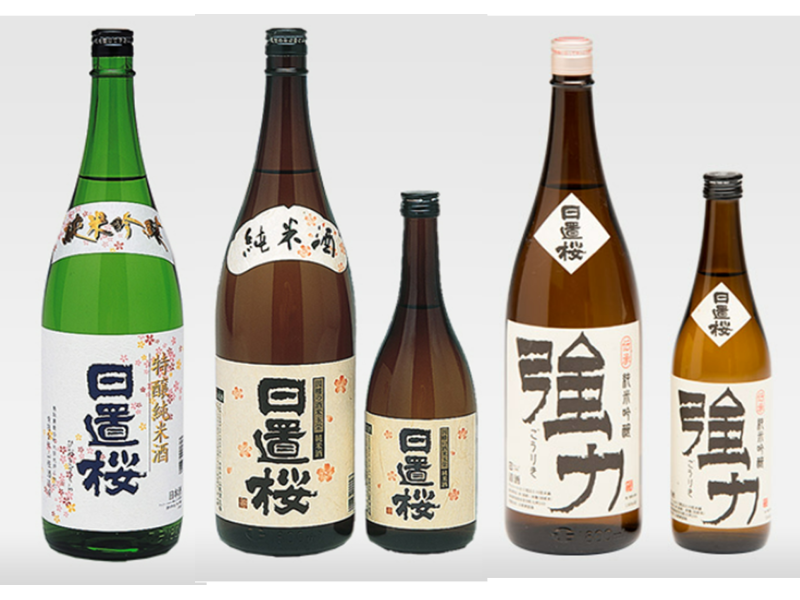
HIOKIZAKURA is brewed in Tottori City, Tottori Prefecture.
Contents
Where the name HIOKIZAKURA came from
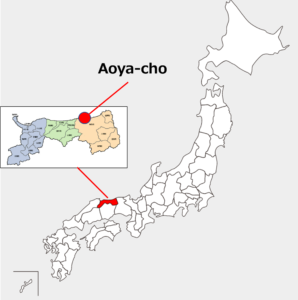
Yamane Sake Brewery, which brews HIOKI ZAKURA, is located in Aoyacho, Tottori City, Tottori Prefecture. The area, once called Hioki-no-Sato, has flourished along the Hioki River since the time of the ancient province of Inaba (7th century), and is mentioned in the Kojiki (History books including Japanese mythology compiled in 712) and Nihonshoki (Chronicles of Japan completed in 720).
There are several theories regarding the etymology of the word "Hioki." One theory suggests that it stems from "heki* 1," which refers to the person in charge of the community. Another theory suggests that it implies "low," similar to Hikita. Both theories are connected to the area's long-standing development in close association with the local community in the Hioki River basin. Over time, administrative districts gradually merged, and in 1955, the town was incorporated into the present-day Aoya-cho. (Source: Aoya-cho Magazine, published in 1984)
Note 1: In the term "heki," the "he" refers to the basic unit group consisting of the head of a household and the individuals called "kokou" organized under them in the Ritsuryo system (Reference: Weblio Japanese Dictionary).
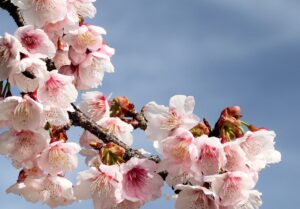
Note 2: Kan-zakura (Early-blooming cherry tree)
Blooms earlier than Kawazu-zakura, which is known for its early blooming, and blooms from February to March. The flowers are single-petaled and do not bear fruit. It is a cultivated variety. Cherry trees in Hioki-dani also begin blooming in mid-January and are in full bloom around mid-February. Depending on the year, they can be seen with snow.
(Reference: Minnano Hana Zukan)
The Lineup of HIOKIZAKURA
The HIOKI ZAKURA Junmai (純米酒)and HIOKI ZAKURA Tokujo Junmai (特醸純米酒)are the flagship and standard products of Yamane Shuzo Brewery.
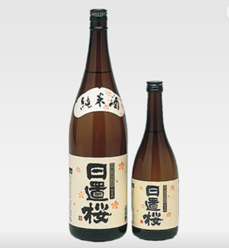

Junmai-shu prioritizes bringing out the flavor of the rice, while Tokujo Junmai-shu offers abundant flavors with a noticeable acidity. Yamane Sake Brewery describes this acidity as "robust and crisp.
≪Goriki (強力)≫
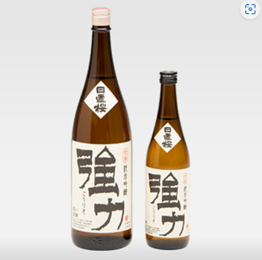
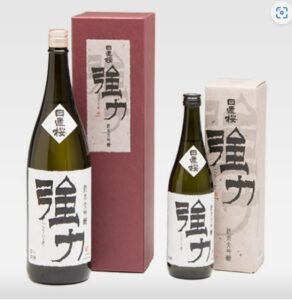
Among the lineup of HIOKI ZAKURA products, "Goriki (強力)" stands out for its powerful typeface.
“強力“ translates to “strong power”, and refers to a sake brewing rice unique to Tottori. The shinpaku*3 of “Goriki” is filamentous (senjo-shinpaku) type, allowing rice to be polished from any side, enabling a high rice-polishing ratio. Only three types of rice, namely Yamada-Nishiki, Omachi, and Goriki, have this type of shinpaku.
Note 3: Shinpaku refers to cloudy part at the center of the rice. It is a starch structure that diffusely reflects light, giving it a cloudy appearance. The presence of the shinpaku has the advantage of facilitating the propagation of koji mold hyphae to the center of the rice, but it is fragile and challenging to polish. It is classified based on shape, and Yamada-Nishiki, Omachi, and Goriki fall under the Senjo (filamentous) shinnpaku category.
(Reference: Sake-no-Motoi, June 2021)
The ancestor of Yamada-Nishiki is Omachi. And farmers from Tottori are said to have brought the Omachi in to Okayama, making Omachi and Goriki siblings. In other words, Yamada-Nishiki has its origins in Goriki.
Among the sake rice varieties with Senjo shinpaku, Omachi is known for its softness, while Goriki exhibits properties suitable for sake brewing and delivers a better taste due to its hard texture that does not easily break down.
The Goriki brand was registered at the end of the Meiji period (1868-1912). However, it faced difficulties in cultivation and production eventually ceased.
Inspired by this, Mr. Yamane, the fourth head of the family (the current head is the fifth generation), decided to brew sake using rice unique to Tottori. He started seedlings from seeds stored at Tottori University, and expanded the number of seeds obtained over the years. The first brewing using Goriki rice was completed in 1989. Today, several sake breweries in Tottori Prefecture brew sake using Goriki.*4
Note 4: The Goriki variety found in Hyogo Prefecture today is called "Tajima Goriki", originally spread from Tottori.
Goriki rice ears grow to a height of about 150cm and exhibit a powerful, wild appearance reminiscent of grass. To convey this image, Yamane asked a calligrapher to write the characters on the label.
“Mountain (Yama)" series of seasonal products
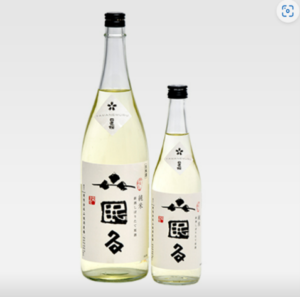
Winter - YAMA-NEMURU
“Nemuru” translates to “sleep”.
Freshly brewed sake in winter symbolizes the stillness of the mountains during the winter season.

Spring – YAMA-WARAU
“Warau” means “laugh or smile”.
This sake is named after the spring haiku phrase "mountain laughter" and is only shipped once every six years, making it a rare delicacy.
As captured in Masaoka Shiki’s haiku, "My hometown, wherever I look, mountains are smiling in joy”, this sake represents the magnificent mountains that come alive with sprouting greenery in spring.
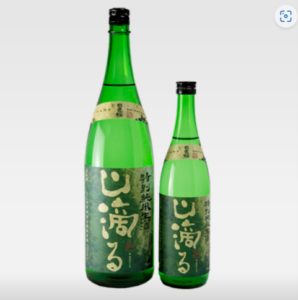
Summer – YAMA-SHITATARU
“Shitataru” signifies “dripping”.
The term is derived from the expression “green dripping,” which describes a summer mountain covered with leaves of grass and trees.
The taste of this sake evokes the sensation of fresh mountain spring water during the summertime.
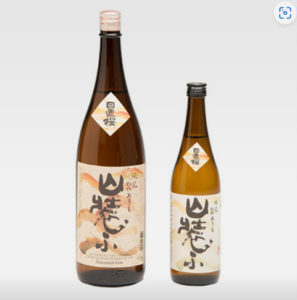
Autumn YAMA-YOSOOU
YOSOOU translates to “to be dressed”.
This sake is named after the season al phrase depicting autumn mountains beautifully adorned with colorful leaves.
It is matured over the summer after undergoing heat sterilization in spring, resulting in a sake characterized by a mild and calm aroma, along with a smooth texture.
About Yamane Brewery
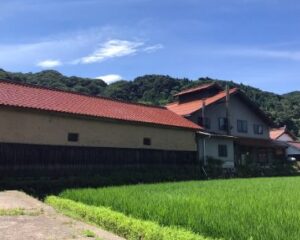
Yamane Sake Brewery was established in 1887.
During that time, the Aoya area has had a thriving sake brewing industry since the Tempo period (around 1840). At one point, brewery even asked for permission to sell sake to other clans because their production exceeded the consumption demand of their own clan. With its harbor advantage for transportation in an era without railways, the Aoya area, flourished in the sake industry.
However, over time, the number of sake breweries in the prefecture declined, although it counted more than 400 in the prefecture at its peak. And only Yamane Sake Brewery and one other brewery remained in the Aoya area. (From the Aoya Town Magazine published in 1984)
Mr. Masanori Yamane, the fifth generation of the family, along with his 10 employees currently brew approximately 400 koku (72,000 liters) of sake per year. Yamane emphasizes that to him, quality is more important than quantity. He believes that producing 400 koku is the right amount when he can focus on making sake he wants to brew with specific ingredients he wishes to use.
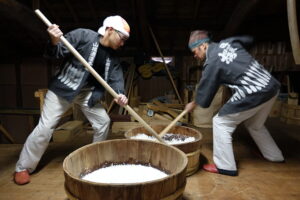
Yamane Brewery's challenge.
Challenge 1: Canon
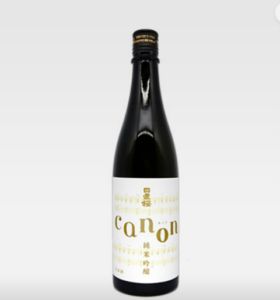
Just as the fourth generation insisted on using "Goriki" sake rice from Tottori, the fifth generation continues to take on new challenges.
One such challenge is "Canon," a limited-time sake.
Inspired by a particular wine, Mr. Yamane sought to capture a "mysteriousness" in his sake taste that could not be conveyed through mere “goodness”. He challenged a completely different approach he had never done before, which led him to confirm the direction of daiginjo-style sake brewing.
The name "Canon" was derived from the famous music by Johann Pachelbel, because “the brewing process resembled the progression pattern of a canon,” Yamane says. Initially, the name was used internally within the company, but eventually became the brand name. It is a rare alphabetical brand name for Yamane Brewery.
Challenge 2: Well digging
Another remarkable challenge undertaken by Yamane Brewery is well digging.
They currently use ultra soft spring water. While soft water has its advantages, it also has some characteristics, such as low mineral content and low yeast activity. Therefore, Yamane decided to dig a well to change the water source and brew a new sake with mineral-rich water.
As of spring 2023, they are in the process of drilling, and if all goes well, a new sake using mineral-rich water may be released in upcoming brewing year.
No “dry” sake but “non-sweet” sake
To simplify the sake-making process, sake is made by fermenting rice. Yeast consumes the sugar in the moromi (mash) during fermentation, converting it into alcohol. The sweetness level of sake depends on the amount of sugar consumed by the yeast. In other words, there is no "dry" component added to the sake. Therefore, Mr. Yamane prefers to refer to his sake as "non-sweet" rather than "dry."
Yamane Sake Brewery is always aims for complete fermentation, where the yeast "eats up" all the sugar, believing it represents the true nature of the brew.
Lastly, here is a message from Mr. Yamane
"These days, sake is becoming more diversified and interesting. However, to fully appreciate this diversity and interesting aspects, a certain amount of learning and knowledge is required. And I believe there are various ways of approaches for learning.
I hope more people step into and explore the richness of the sake world. I’m sure it will be connected to another interesting world. "
Interview Date: May 23, 2023(ZOOM)
Interviewee: Mr. Masanori Yamane, President of Yamane Brewery Co., ltd
Image Data Presented by: Yamane Brewery
Interview Note:
When you observe a work of art, whether it is a painting or a book, you can perceive the personality of its creator. And when you know the creator, it deepens your appreciation of the work.
The same principle holds true for sake, and this is an impression I have gained through my interviews with various sake breweries.
Yes! Sake is truly loyal to the brewer and carries their unique essence.
This is exactly what I experienced during this interview.
My initial impression of HIOKI ZAKURA was that it was not an easy-drink type, but it possessed a captivating depth that I could not let it go. However, after listening to Mr. Yamane’s story, I became fully convinced.
"I won’t flatter anybody. That’s my policy for sake brewing,” remarked Mr. Yamane. Initially, I found him somewhat reserved and straightforward. But as the interview progressed, I noticed glimpses of his softer side, and his comprehensive explanation gradually convinced me of the deep flavor of HIOKI ZAKURA.
The township of Hioki (Aoya-cho) is renowned as the production area for "Inshu washi," a type of Japanese paper that has been in use for centuries. It must have always been a region blessed with pristine water and adorned with cold cherry blossoms, bringing joy and prosperity to the people.
Although finding seasonal or limited-edition HIOKI ZAKUURA in Nagoya may be a challenge, whenever I come across them, I will undoubtedly enjoy them while contemplating the beauty of the Hioki area.

